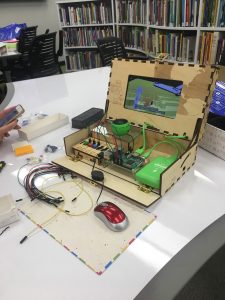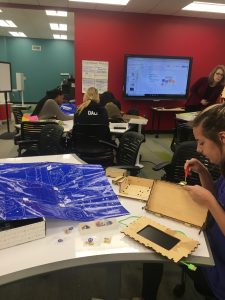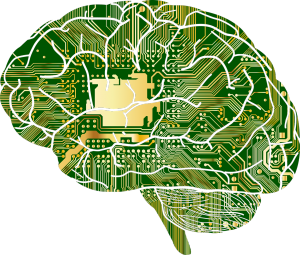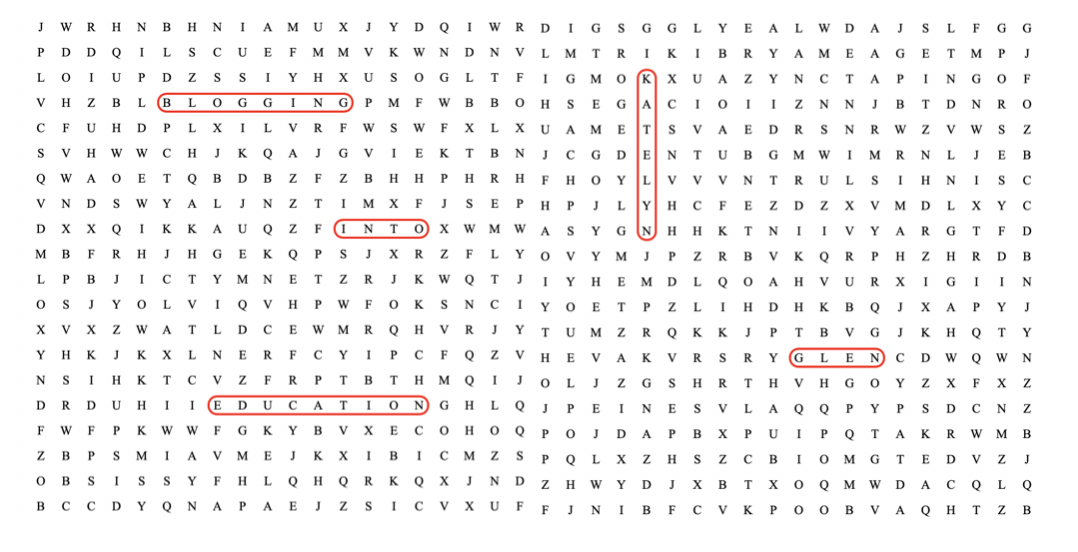Topic: The first two modules of class for ECI201 included learning about the 4Cs, computational learning, and building a Piper computer!
Assumptions: Over the last few weeks, I have learned more about the functionality of classrooms than I ever thought imaginable! The 4Cs: collaboration, communication, creativity, and critical thinking are all integrated into schools in hopes to positively influence the use of technology. The purpose of 21st century classrooms are to provide an environment for students to excel in each category of the 4Cs, which in turn creates a pathway for the introduction and application of computational thinking. Prior to being exposed to the various uses of computational thinking and the 4Cs, I assumed these techniques could only be used in computer or engineering classes. However, as I participated in building a Piper computer, which is similar in guidelines to a science fair project or a set of instructions for a game, I found myself communicating with my partner on how to interpret the directions. My partner and I learned how to think critically and quickly while determining which screw went with which washer on different pieces of the computer. By collaborating, my partner and I both contributed equally to building the project and we worked together in the areas we were personally strongest; for example, I would vocalize the instructions and find the separate pieces while my partner would assemble the pieces by following the directions. Additionally, our creativity was clearly evident while playing the computer game after assembly, specifically because of how we were able to quickly maneuver the program with no previous experience.


New Ideas: At the turn of the twenty-first century, computational thinking quickly sprouted as an innovative idea to better prepare and equip students in all fields of study. Computational learning expresses the importance of using problem solving to find a solution. The four categories associated with computational learning include decomposition, algorithmic thinking, pattern recognition, and abstraction, each of which work together to make a problem easier to solve computationally.
Decomposition breaks a problem down into more easily understood pieces, which is where the classroom is needed to provide a space for the collaboration and communication needed to discuss what parts of a problem can be taken apart into smaller pieces.
Algorithmic thinking is used to create a series of steps to achieve a desired outcome, more specifically catering to being creative in terms of how students formulate the steps required.
Pattern recognition eliminates repeated information and utilizes similarities to make educated decisions based on repetition. Recognizing patterns requires critical thinking skills, which is developed and needed both inside and outside of the classroom.
Abstraction eliminates unnecessary information to develop a more concise solution. To eliminate unnecessary sections of a problem, students must communicate and use critical thinking to decide what information can be removed.
In addition to the evidence provided in class, the forum post on computational thinking, and being able to apply the skills while building a Piper computer, I also found this article on a non-profit organization called Digital Promise. The organization is focused on encouraging the use of innovative technologies in education and has been targeting the integration computational thinking in schools to increase the successes of students being able to solve complicated problems with interrelated parts. More information is available here.


Course of Action: The preconceived notions I had about the limitations of computational thinking not being able to apply in all classrooms has now changed. From what I learned concerning the applications of computational learning and the 4Cs, I have realized the importance of creating a classroom for future students to explore the components of thinking computationally. Whether the subject be science, math, language arts, or social studies, the basis for breaking down information, eliminating unnecessary information, recognizing patterns, and developing plans for assignments and problems can be applied in each area of study. In regards to having an action plan, I will use my education on the topic of instructional technology to teach students how to think critically, be creative, collaborate, and communicate in ways that will prepare students for computational thinking. I plan to enable students to develop the skill of computational thinking by allowing students to create their own algorithms for solving simple problems which stem from already learned formulas, specifically in a mathematics lesson. I will encourage group work when analyzing passages so that students will learn from each other a way to recognize patterns in writing plots and eliminate unnecessary information when presented with a text. Lastly, I hope to empower students to decompose historical events into smaller pieces so that the information retained is clearly understood and easily recalled in future classes.
Overall: Computational thinking is useful to all classrooms, not just computer-science based, because of the importance of using skills acquired to further build upon new techniques to approach a topic or problem. From this course, seeing the application of computational thinking while building a computer, to understanding the usefulness in the problem-solving technique as discussed in the forum, my perspective on thinking computationally has been influenced, and I agree that that innovative approach is necessary in producing more efficient and highly capable students.
Popular Source: https://21centuryedtech.wordpress.com
Academic Source: https://thejournal.com/articles/2018/01/02/its-time-to-weave-computational-thinking-into-k12.aspx
